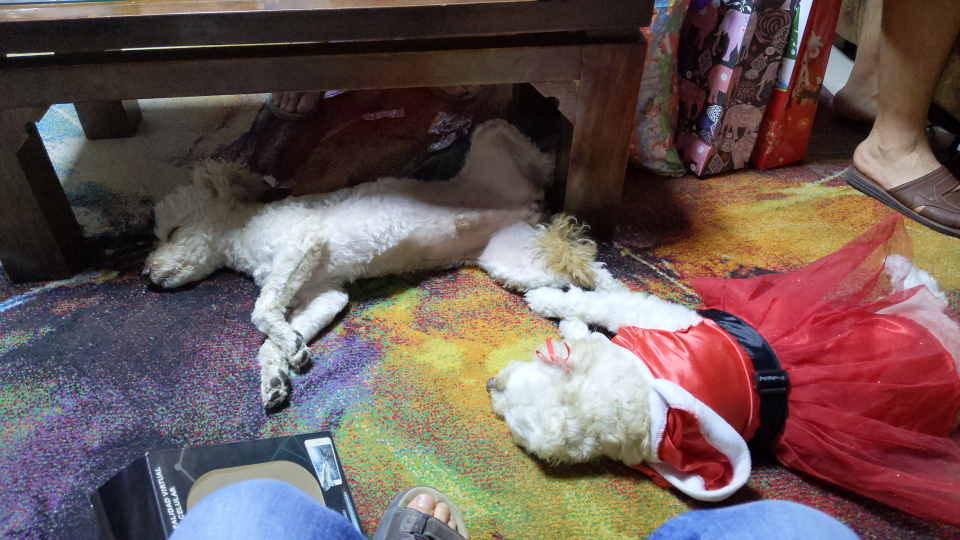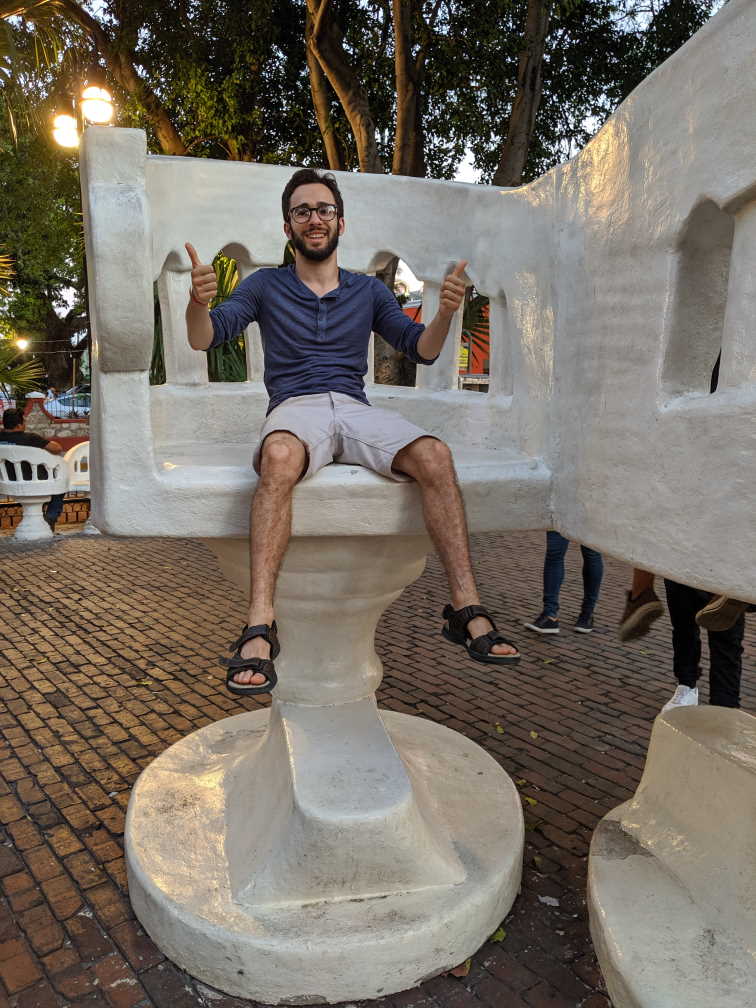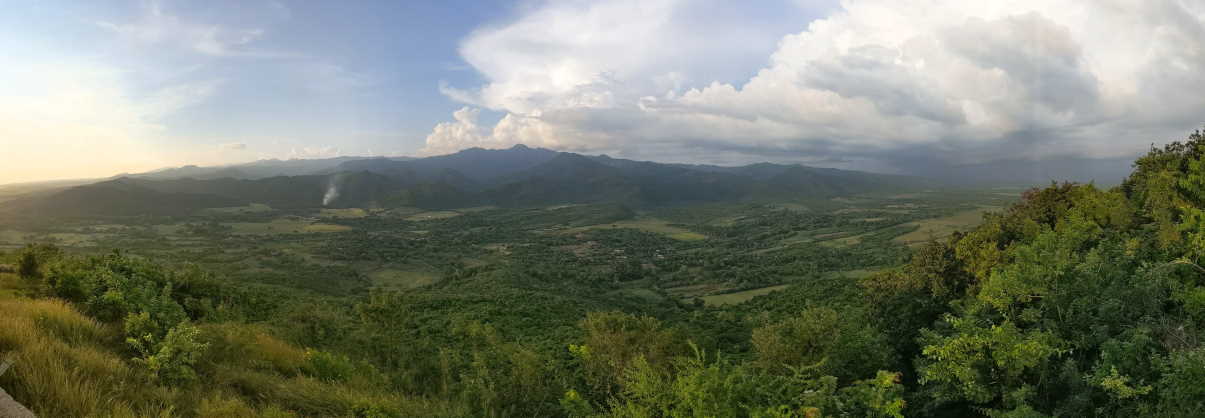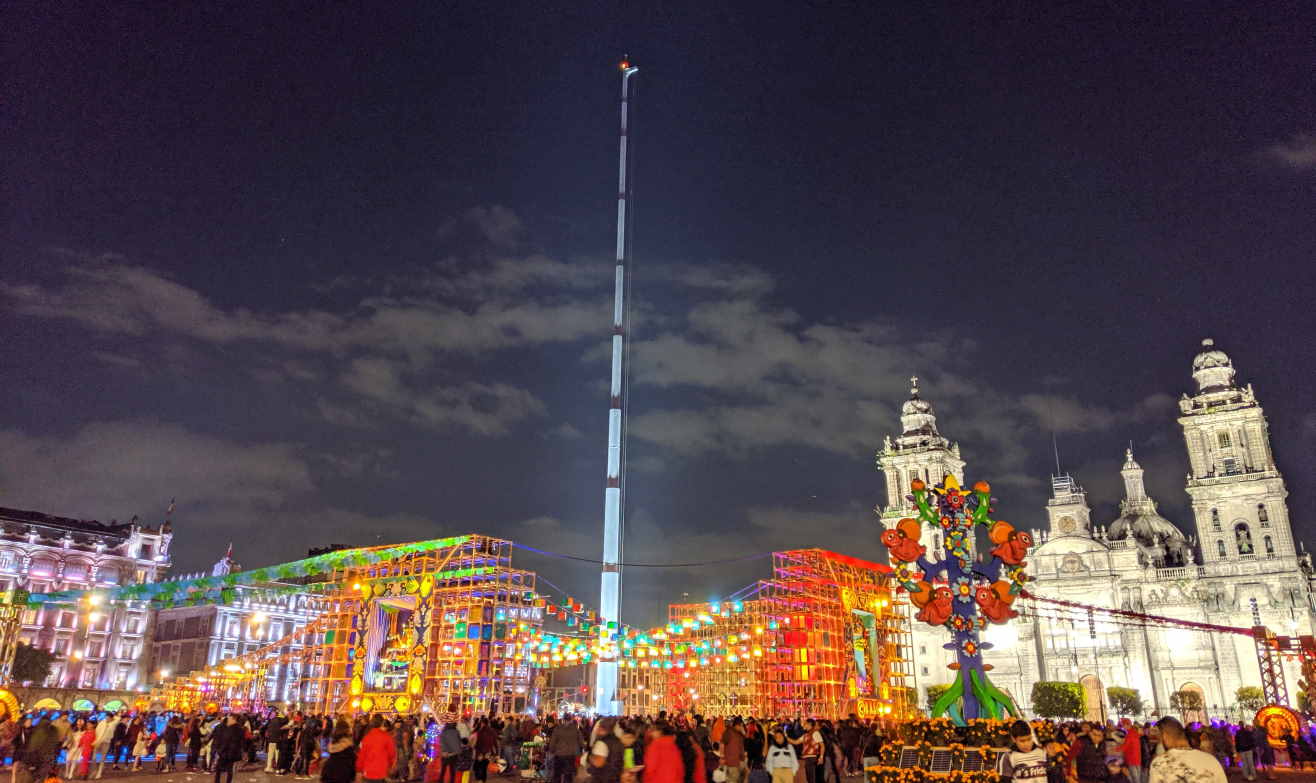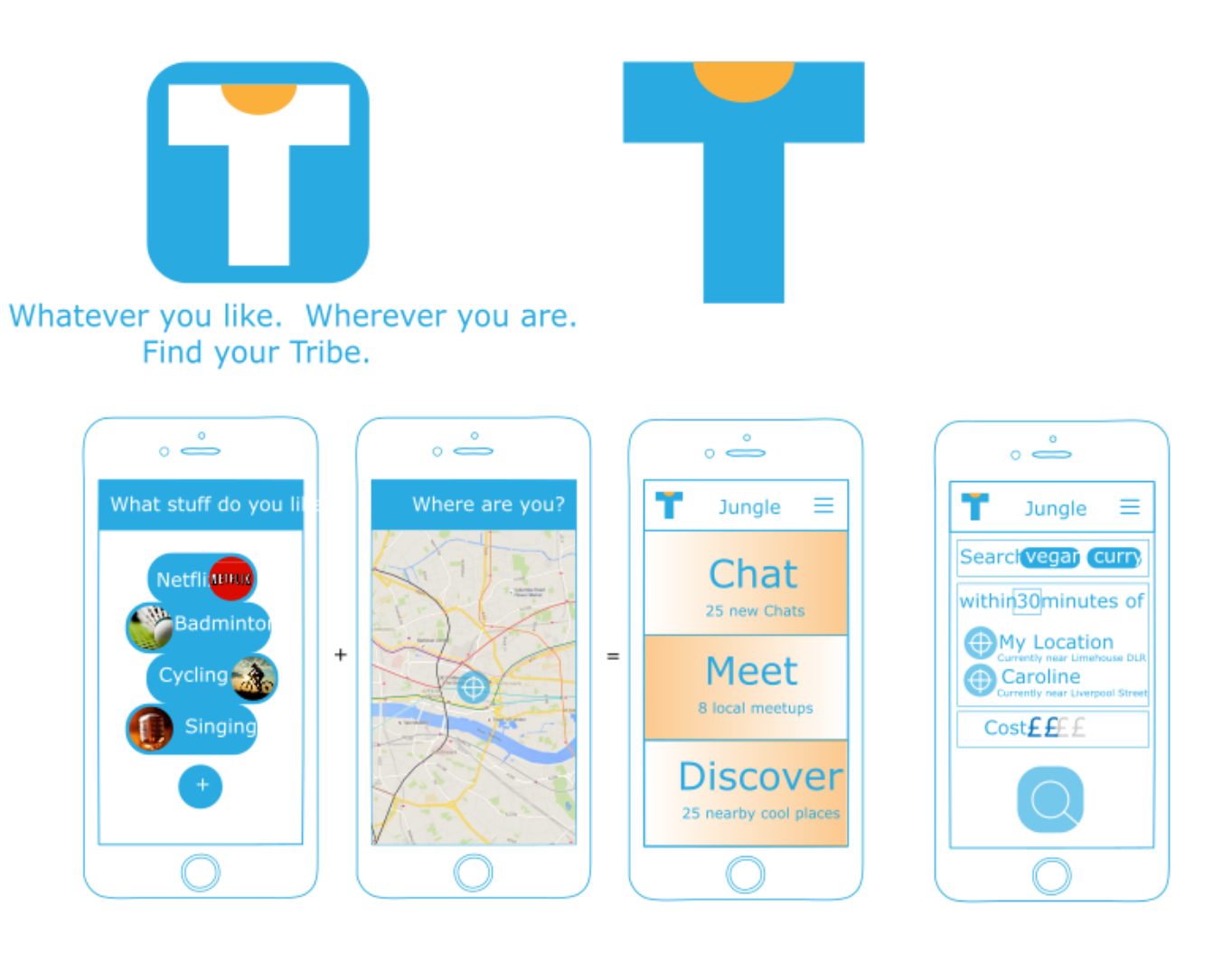Over a month has passed since the last blog post, and as I promised, I offer you more details on our trails. I started writing this sat on the floor near the only plug I can find in Calama airport, waiting for a flight to Santiago de Chile. So how did we get here?
Peru Part 0: Plans Change
Original Plan
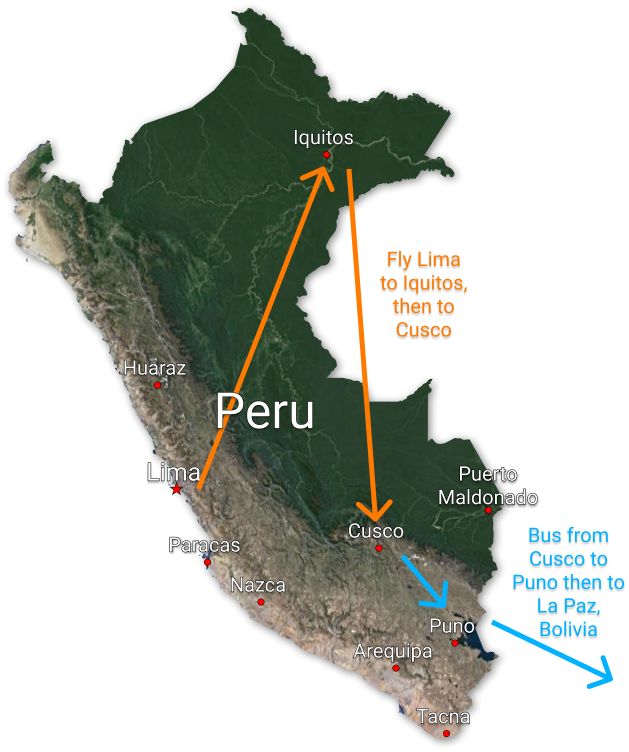
The original plan involved more flying, less time in Peru, and more time in Bolivia instead. Two things changed the plan. First booking flights with LATAM was a mess and secondly the political situation in La Paz deteriorated a few weeks before we would have been there.
Still in Mexico City, we tried to book a flight from Lima to Iquitos with LATAM. We quickly found out that LATAM Peru charges double the price on their English websites, and on the Spanish website they rejected our foreign cards. However, they’re willing to sell the normal price ticket to tourists if a travel agent takes a cut of the price. This is a clever scheme as online travel agents such as Kiwi, provide you with minimum baggage after being sent through by Google flights. This means you could be charged a $75 fee if your carry on bag is over 4kg. We met people who flew LATAM with Kiwi without issue, but the fine print does give LATAM and Kiwi a license to rip you off if they feel like it. The whole thing was a stressful mess. As we didn’t feel like paying more for a 1 hour flight than our 6 hour flight to Peru, we traveled by bus instead.
Actual Plan
Changing the plan to travel by bus led to a slightly longer, but much better time in Peru. Our bus travels were:
- Lima - Paracas (4.5 hour day bus)
- Paracas - Nazca (3 hour day bus)
- Nazca - Arequipa (11 hour night bus)
- Arequipa - Cabanaconde (8 hour day bus to the Colca Canyon)
- Cabanaconde - Arequipa (8 hour day bus)
- Arequipa - Puno (6 hour day bus)
- Puno - Cusco (6 hour day bus)
- Cusco - Challacancha (4 hour day bus to start of Salkantay trek)
- Hidroeléctrica - Cusco (6 hour day bus)
- Cusco - Puerto Maldonado (11 hour night bus)
- Puerto Maldonado - Cusco (11 hour night bus)
- Cusco - Puno (6 hour day bus)
- Puno - Tacna (9 hour day bus)
From Tacna we got a shared taxi across the Peru/Chile border to Arica. So yeah, an awful lot of buses. Mostly we travelled with Cruz del Sur. The Salkantay bus was with a tour group, to Cabanaconde and Tacna was with small local bus companies who didn’t have websites. All intercity buses in Peru have urinal only toilets, except for our bus to and from Cabanaconde which just made stops at toilets along the route. This was literally really cool, because we stopped at the Andes Viewpoint at 4870m above sea level, to find it was snowing!
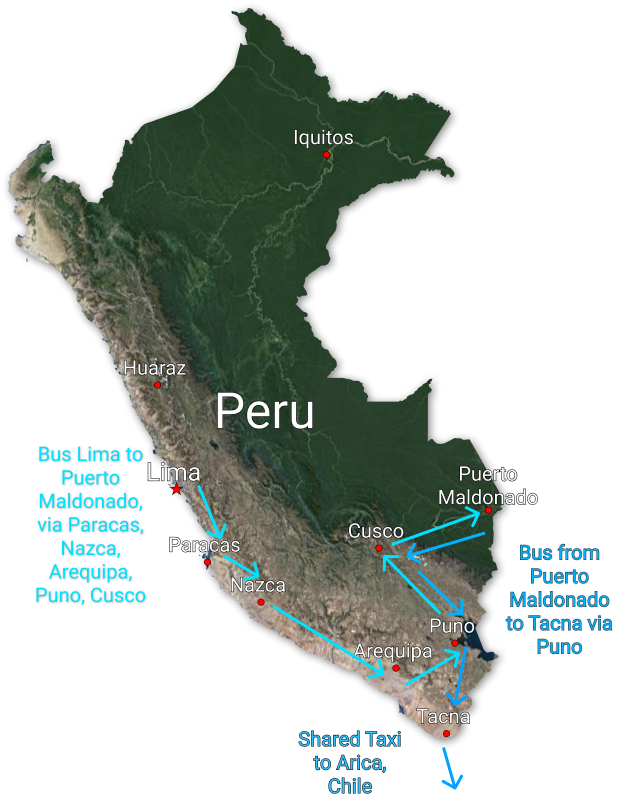
Peru Part 1: The sea and the desert
Lima
Lima only really has 2 days of touristy highlights, but it’s a fairly good city to relax in. Lima is an interesting city that feels a bit like Santa Cruz - California by the beach, but more like Hyderabad - India further in. Not that much to see, a bit dusty and polluted, but clearly up and coming. Rentals in the touristy trendy districts of Miraflores and San Blas? are almost London prices. The historical downtown had a main square, and one free history and art museum, but not much else. Eating out in downtown was cheaper than in Miraflores though. 20 Peruvian Sols for a 3 course lunch, instead of 40 ish (about £4.80 vs £9.60). We got to try some Peruvian staple restaurant food like Cancha (fried corn) and Ceviche (raw fish cooked using lemon).
We stayed in the pricey, touristy area of Miraflores as apparently the historical downtown is quite dangerous at night. The price was worth it because we were close to the beach and it meant we got to satisfy my inner transit nerd and try the BRT (Bus Rapid Transit line). Lima’s one BRT line has two bus lanes in the middle of a major crosstown highway. This allows for a mishmash of local and express routes. All routes stop at the main central bus station, but the express routes only run during the day (I think because during peak hours all the capacity is taken up by local buses).
The beach is mainly a big grey pebbles beach, as opposed to a sandy swimming beach. However there’s lots of nice parks on the hills overlooking it, where you can see people surfing below, and paragliding above.
Paracas
After 4 days in Lima we got on a bus to Paracas. I’m not sure who (probably someone who works at the Peru tourist board) but someone described Paracas as the poor man’s Galapagos. It’s a small village with nothing but hotels and tour companies for the Islas Ballestas, and the Paracas national park. The Islas Ballestas, are a group of islands uninhabited by humans, but overflowing with animals.
Most of the islands are covered in common seabirds such as seagulls, pelicans, terns and boobies. There are also a few more less common animals such as Humboldt Penguins, Sea Wolves (South American Sea Lions), and crucially Guanay cormorants. Guanay are birds native to the Pacific coast of Peru that make the islands valuable because of their poo! Guanay are the main producers of Guano (from the Quechua word wanu. Quechua is the most common native language from the Inca empire), seabird and bat poo that happens to be fantastic and expensive fertiliser.
No humans are allowed on the islands, so seeing the animals involves getting a speedboat that leaves the main port at 8am and spends 2 hours going to and driving around the islands.
After a breif phone charge, and video backup nap, the second half of the day involved cycling in the Paracas national reserve. I bought a fantastically subtle bright red sun hat for cycling through the desert. It took quite a long time to cycle the 30km loop, but we got to see a very cool red beach and some flamingos.
Nazca
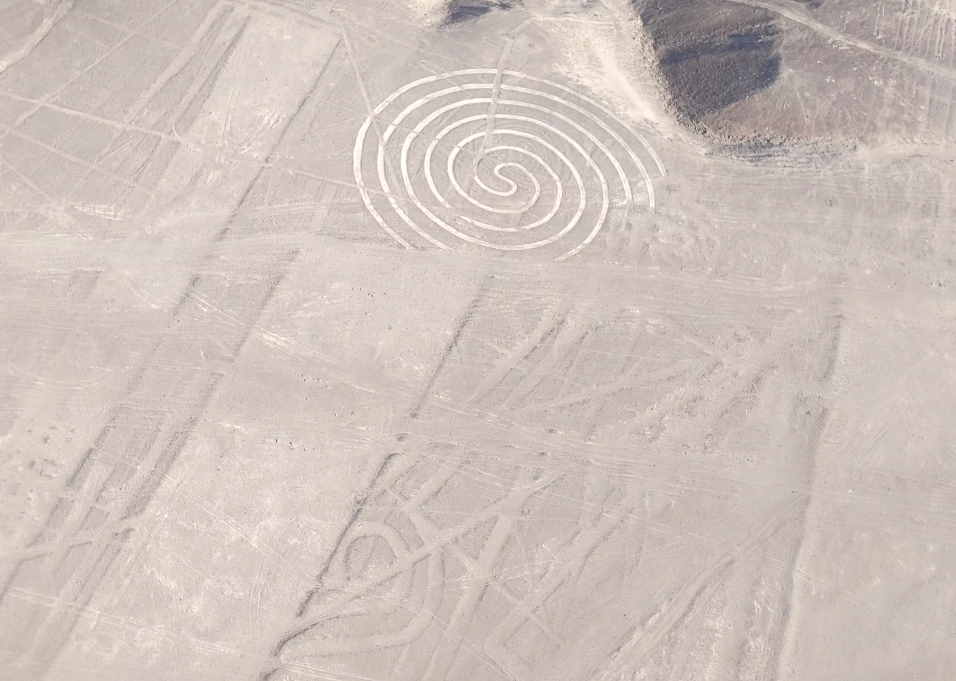
Trying to avoid night buses, we decided to stop in Nazca in order to get a day bus to Arequipa the next day. However thanks to a combination of a buggy Cruz Del Sur website, and my lack of checking, I accidentally booked a bus at 10pm instead of 2pm. As a result we had essentially an extra day in Nazca. This ended up being one of the coolest and most action packed days of the whole trip. We flew over the Nazca lines and took a sand buggy tour of the desert!
We booked our Nazca lines flight through our hostel for $70 US the afternoon before, so the only flight available was 7am. So we had a very fast transition from sleepy, to awake and full of adrenaline as we swooshed off the ground in a single propeller, six seater, Cessna C206. It feels a lot like normal jet flying, until they roll to either side to give you a good view of the Nazca lines. The lines are fairly fascinating and you get a chance to see each one twice. Once as they roll left and once as they roll right. On our flight we saw about 13 of the lines near the town of Nazca, but there are actually hundreds of lines spanning almost 1000 square kilometres.
After another photo backup, charge and nap we were picked up by a taxi driver who at first didn’t know both our names. Then we were taken to a petrol station just outside of town. It was starting to feel like an action movie, and then it became one as two sand buggies rolled up. Image all terrain quad bikes on steroids.
We first drove to see some of the Cantalloc Aqueducts built by the ancient Nazca people. You might be thinking of a canal on a big bridge like the Aqua Marcia or the Pontcysyllte Aqueduct, but these looked more like the desert hole Batman escapes from in “The Dark Knight Rises”. That’s because the “aqueduct” is actually a spiral staircase to a river that flows downhill under the ground.
Then we headed to a desert graveyard, a large mud brick temple and then up a big old dune for sandboarding! Sandboarding sounds like snowboarding, but unless you have snowboarding boots, you actually just ride it like a small snow sledge. How festive.
Peru Part 2: The mountains
Arequipa
I did not have a good sleep on the night bus to Arequipa. I did however watch 5 episodes of The US Office before the Netflix downloads expired. Kathy was not pleased as I cracked up to the screams of “Save Bandit”. We were recommended a hostel for Arequipa (Arequipay Backpackers), which was really nice, and had a lovely dog Layla as a mascot. After the nightbus we were both fairly destroyed, but dancing queen Kathy still managed to go bachata dancing at 10pm. (I went too but I gave up after 5 tired, clumsy minutes).
Arequipa is the second largest city in Peru, and home to the countries highest court. The highlight of Arequipa city was visiting the Santa Catalina Monastery. For Peru it seemed expensive ( 40 Sols / £9.50 ), but it was worth every penny. The monastery is huge, so despite having many visitors, it’s beautifully painted streets were often totally quiet. And on top of the monastery was a fantastic view of the city and the mountains and volcanoes that overshadow it.
Colca Canyon
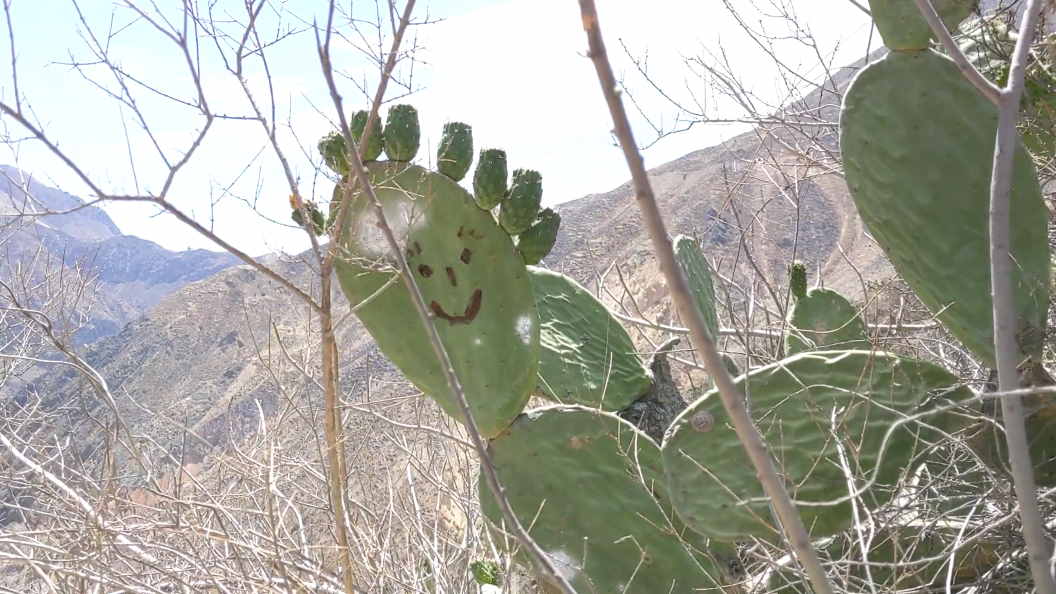
Trekking in the Colca Canyon is a must for all tourists passing through.
Arequipa is the closest city to the Colca Canyon, so lots of organised tours start and end there. However Arequipa is not the closest settlement. Not even close. The start for all hikes in the Colca Canyon is the village of Cabanaconde, a 6 hour drive away. So to avoid getting up at 3am for an organised tour, we got a 9am bus to Cabanaconde ourselves. We headed to the bus station with Tom from our hostel (who happened to also go to Warwick university, small world). At the bus station we bumped into Kristi, a Swedish guy also from our hostel, and his French friends (Joni, Adeline, Chanel and Jabin). We even had dinner together at a restaurant where you have no choices, but the food is cheap (7 sols, £1.70).
The following day we started hiking into the Colca Canyon at 7am. Entry into the Canyon National Park costs 70 sols (£16.50), a flower or animal at a checkpoint 2km out of town.
Unlike the tours which typically explore the east of the Canyon, we went towards the west. Our first day was 9km of downhill towards Llahuar lodge, day two was 4km of up then 5km of straight down towards Sangalle. The third and final day was 4km of straight up back to Cabanaconde. Over 1000 metres of elevation gain. The first two days were pretty tough because of the scorching sun. So despite being at over 3000m above sea level, it was one sweaty trek down. The final day of insanely steep ascent was cloudy and overcast (thank goodness!).
On the first day two dogs followed us from Cabanaconde towards Llahuar lodge. One we called Blondie (because it was blonde), and another I called Velcro (because it’s fur was full of thistles). About a third of the way through the first day we lost them both, but the following morning Velcro showed up at our hostel! He even lead the way on the next day of trekking
Puno
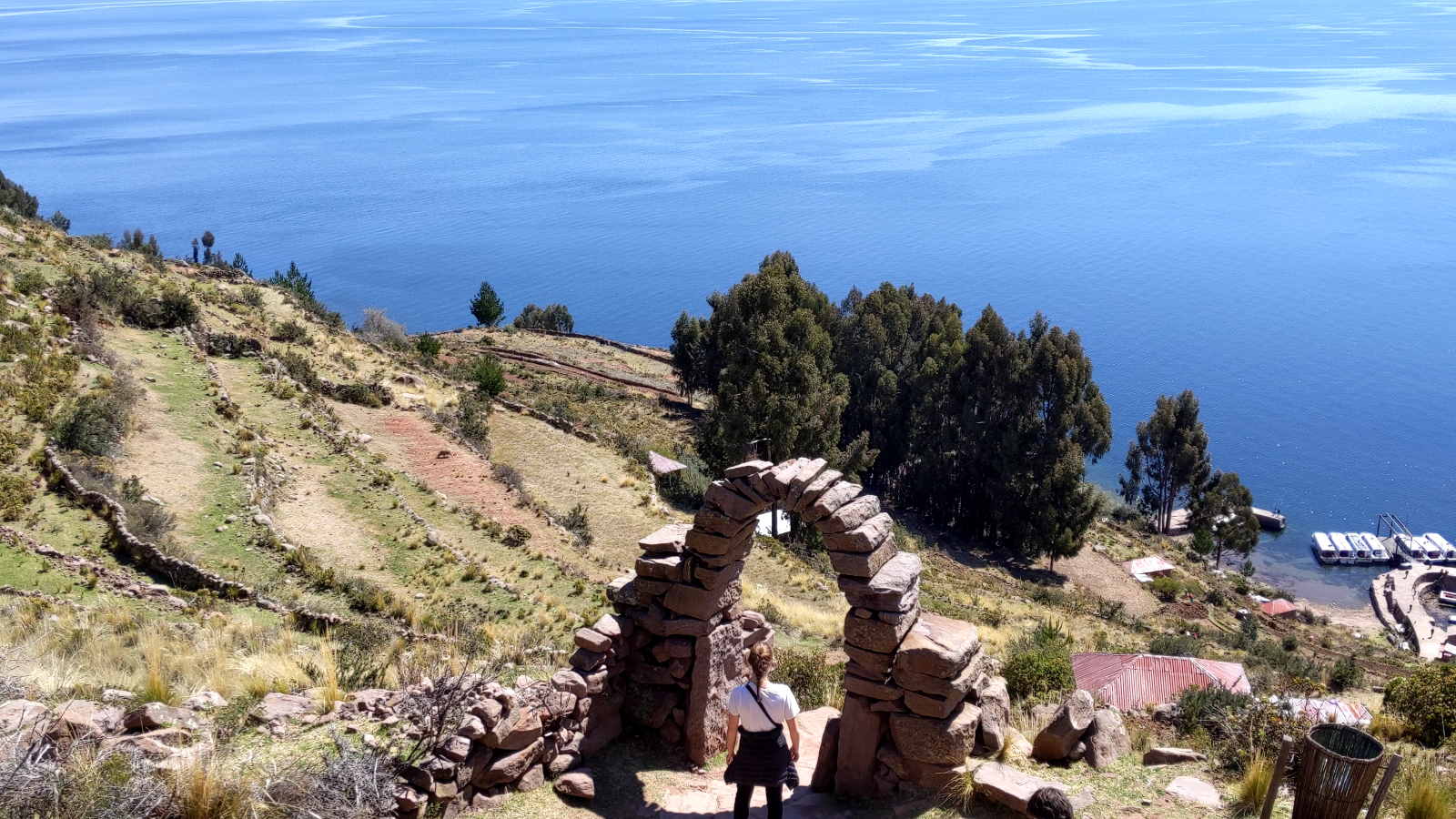
In order to avoid another backbreaking, brain busting, terribly tiring night bus, we stopped off in Puno on our way to Cusco. We found Puno quite charming. The food was cheap but good We found lunch for 3.5 sols once (£0.80)!
There are two main reasons to visit Puno. Traveling to Bolivia or visiting the islands on Lake Titicaca. We visited the floating islands of Uros, and the larger non-floating Taquile island.
Uros islands starts with a mini history lesson and a demonstration of the technique used for building the floating island which was cool. However the following 40 minutes were just sat on an island doing nothing being sold tit-tat.
Taquile Island, which was a further two hour boat ride from Uros, was much nicer. It felt a lot like a stereotypical mediteranean island. Tranquil walkways, covered with beautiful flowers, with stunning views of the sun shining on Lake Titicaca. It was about one and a half kilometres from the dock to the town centre, but at almost 4000 metres above sea level, it felt much futher. Taquile has no roads or cars. So just before leaving I took a moment to record just how peaceful the sound of the waves and birds was.
Cusco
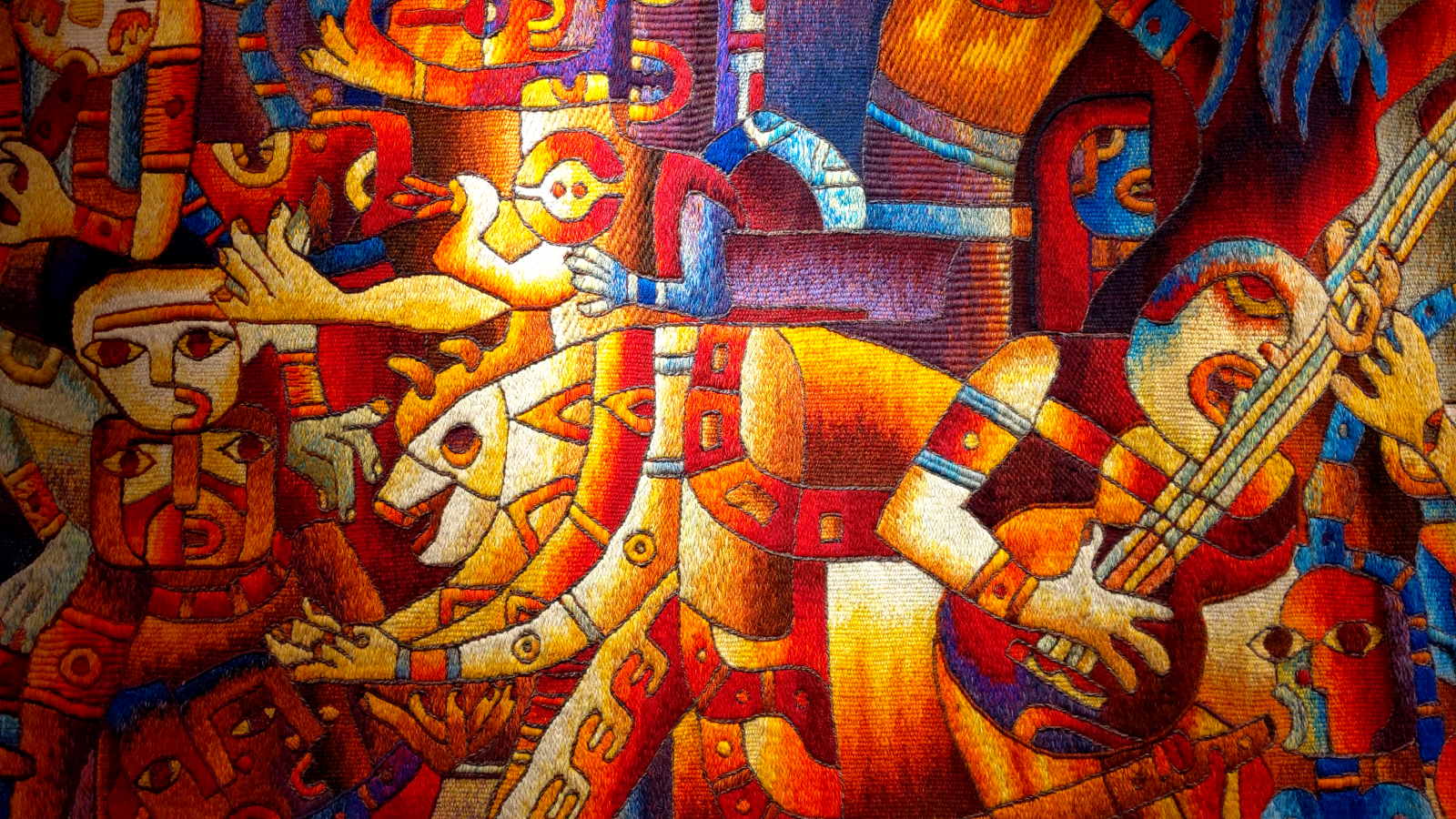
From Puno we headed to our homebase for the next few weeks, Atawkama Hostel in Cusco. We really liked this hostel for a bunch of reasons. For one we met some cool people like Sarah from The Netherlands, and Will from Nebraska. Our first day in Cusco we cooked some sweet potato chickpea curry which was delicious, bar one issue. The shop only had dried chickpeas, and as we didn’t want to wait 24 hours, we only boiled them for 2 hours, and they were still hard.
Our second day in Cusco we joined some dutch women in our hostel to head to the nearby Maras Salt Ponds. In our usual hipster fashion, instead of taking a 7am tour organised by our hostel, we went there via colectivo. Colectivos are minivans that head to their destination once they fill up. This had the advantage of being able to head off at 11am, and walk down to the salt ponds at our own pace. The ponds are filled with a stream of naturally salty water, and in the sun, the water evaporates, leaving the pinkish salt crystals behind.
Salkantay Trek
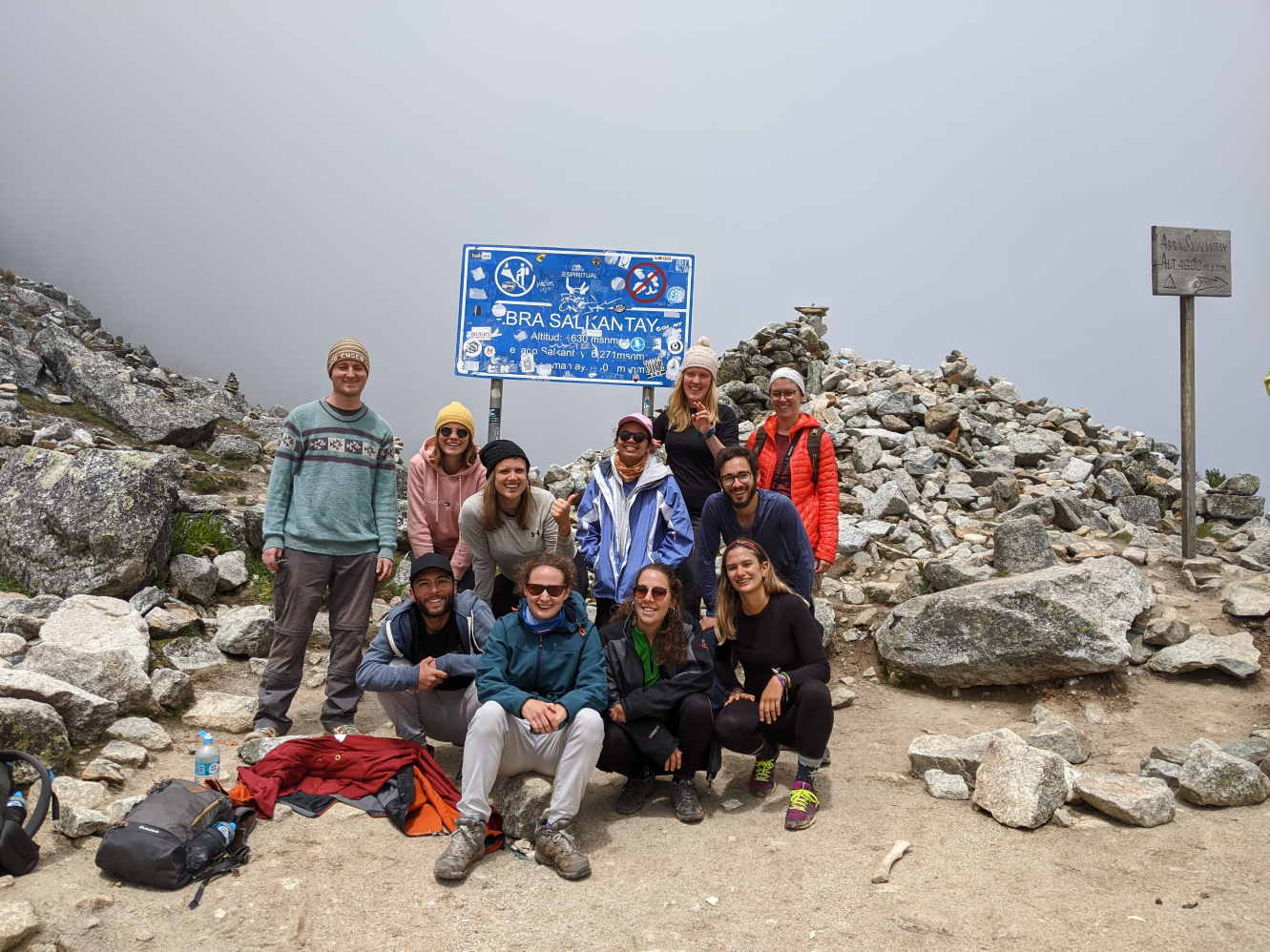
The third day started mucho temprano. 4:30am to be precise. Our tour picked us up for the Salkantay trek to Machu Picchu. This trek turned out to be slightly easier than the Colca Canyon. The distance and elevation were both higher, but what made the big difference was donkeys. Well mules and horses to be precise. Porters guide along mules that carry fabric sacks filled with duffle bags that carried up to 5kg of our stuff. This meant I could trek with just my tiny day bag. Compared to Colca Canyon with my massive 5kg bag, it felt like walking on air.
The first day of the trek was smooth sailing. Less than 10km of walking, and it only rained once we arrived at our campsite for lunch. After lunch, we had an actual challenge of going up another 500m of hill to a beautiful lake. Noice.
Day two was the big one. The Salkantay mountain pass. The Salkantay mountain itself is an imposing peak of 6271m. Luckily the mountain pass only reaches a measly 4629m high. Just high enough to make breaking a bit hard, and to require me to pay an extra £30 for my travel insurances extreme pack! At this elevation it was quite nippy, but all the ascent meant I was still fairly sweaty. After 6km of distance and 700 metres of climb, there was still 16km of distance downhill left to go. I thought nothing could top the glory of eating our Snickers at over 4600 metres, but the downhill part of the day was the best part. Not because it was easier, it actually hurt my ankles a bit. But because the change is climate is so noticable. You go from snow capped mountains to highland jungle in less than 5 hours. In between felt a bit like north Wales.
The third day was a more relaxed one. We walked through the quite humid highland jungle following the river Santa Teresa for about 15km, before our tour minivan picked us up. We then drove to the town of Santa Teresa, where three hours of relaxing in massive thermal pools awaited us. The tour also organised a bonfire at the hostel for the same evening. This started with innocently roasting marshmallows, and ended in everyone blind drunk screaming the words to Queen songs.
The fourth day was searing heat, and a pulsing hangover. The best and worst part was walking along the train tracks from Hidroelectrica to Augas Calientes (or Machu Picchu Pueblo). It was fantastic because you get to see these very cool looking Peru Rail trains go past, or peek inside their decadent inner as they’re parked and empty. However, this means often walking along the bumpy stones of the railway for 8 kilometres. To say we were worn out once we reached Machu Picchu Pueblo, would be an understatement. To make matters worse, our guide managed to mess up the ticket of a woman on our tour (The tour company buys the Machu Picchu ticket). The gate where you enter Machu Picchu checks that your name on your ticket matches your passport. Our guide somehow managed to buy two tickets with the same name on. We stayed up late at a restaurant as he tried to argue that it was the fault of the woman who had two tickets with the same name. We all went to bed for a 4am wake up, tired and angry, but one poor woman went to bed wondering if she’d get to see Machu Picchu at all.
The following day, in the rain and under the cover of darkness, we finally walked to the lower checkpoint for Machu Picchu. A small queue formed as people waited for the gatehouse to open at 5am. Luckily, after some begging by our tour guide, the ticket issue was resolved and our whole group started the grueling climb up the stairs to Machu Picchu. After sweating out half the liquid in my body up 900 metres of ascent over 3 kilometres of distance, we finally arrived at our mystical destination. By mystical I really mean, extremely foggy. Our tour insists on getting to Machu Picchu at 6am to see it at sunrise. This is fairly pointless, as until 8am it’s totally covered in fog.
After lots of selfies and videos of a few resident Machu Picchu llamas, it was time to head down, to suffer the final leg of the trek. Walking back down the railway to Hidroelectrica to get a 6 hour bus back to Cusco. It was strange to leave the humid highland jungle in shorts and sandals, and arrive back to cold Cusco at 10pm at night. We slept for a very long time that night.
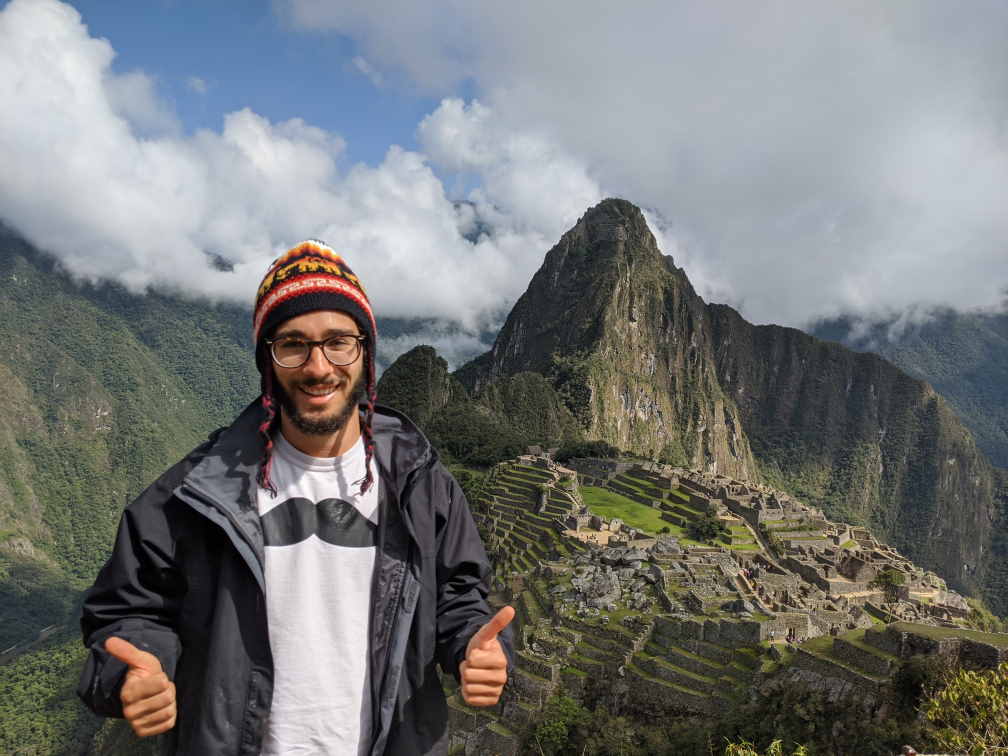
Peru Part 3: The Jungle
Peurto Maldonado
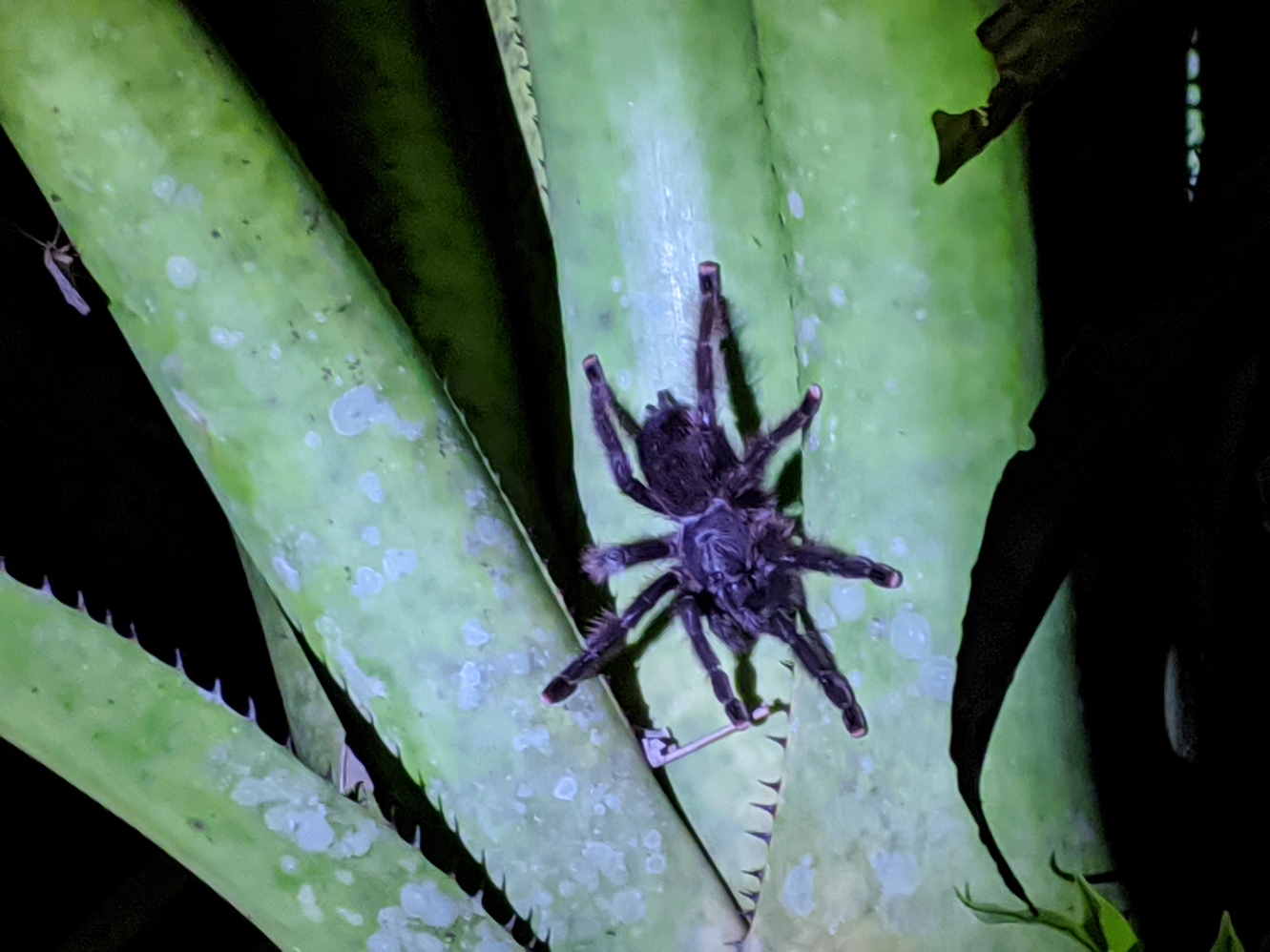
After resting in Cusco for a few days to recover from the Salkantay trek, we headed on a night bus to Puerto Maldonado. This was a much better night bus as it had fully lie back seats. I’d say about 170°. I could actually sleep.
Much like Iquitos in the north, Peurto Maldonado is the south eastern gateway town to the Peruvian Amazon. Our hotel was by the river and right next to a Golden Gate inspired bridge that if you drive over, you’re only a short drive to Bolivia or Brazil. On the Salkantay trek we met a 19 year old guy called Harvey who was volunteering in Puerto Maldonado catching butterflies. This is irrelevant to our jungle visit, I just hope he’s doing well.
From Puerto Maldonado we went on a 1night 2 day trip to the jungle around Lake Sandoval. This involves getting a big 20 person boat down the Rio Madre de Dios (basically OMG river), then walking down a wooden walkway until you reach a series of smaller 8 person boats. The first day Canoeing in Lake Sandoval we saw some turtles, some birds and monkeys in the trees, and in the evening a few caiman alligators! That night we wondered about searching for insects in the middle of the jungle. We saw a lot of grasshopper type insects, a frog, and a few big fluffy tarantulas. Wondering through the almost total darkness with the sound of a generator running and insects chirping reminded me of the stealth game Spliter Cell, just a little bit. I’ve never been more glad to sleep in a mosquito net.
The next day we woke up bright and early at 4am for some bird watching. This basically involved going back on ourselves towards the Madre de Dios river to find an area of jungle where we could see the birds. We managed to see some bright green parakeets, some hoatzins and even one woodpecker!
After one final nap in our mosquito nets, we headed back to Perto Maldonado for a relaxing day by the pool, before we began the journey towards Chile.
Peru Part 4: The road to Chile
Back when we were young and naive we planned to fly from Puerto Maldonado to Tacna, where we would then cross into Chile. As I explained earlier this was a costly no go. By the time we took the night bus back to Cusco, we wanted to avoid them at all costs. The fastest way to get to Tacna avoiding night buses was to take a bus from Cusco to Puno, then there is one company that runs a 9:15am bus from Puno to Tacna. This bus was quite an experience. For starters it was Kathy’s birthday, so a pretty rubbish day to be on a bus at all. Not helped by the fact that despite turning up half an hour early, we were the last people to be told the bus was about to leave. So we had to fit our massive backpacks in the overhead luggage section. The bus did not have working air con, so where we were on the top floor became unbearably hot if the bus stopped moving. When the sweltering conditions occurred happened to coincide with when two salesman with little pocket loudspeakers, we’re let onto the bus in order to sell Moringa or Coca based products that claimed to cure every ailment on the planet.
Once we got to Tacna it was finally time to relax, and celebrate Kathy’s birthday with the most expensive meal of the trip. Ceviche de Pescado for me, and Seafood Risotto for Kathy. All for the expensive price of £30! The following day we got a shared taxi to the Chilean border, and that was that. Goodbye Peru!
Chile and Beyond
Upon arriving in Chile we stayed in Arica for two nights, just to spend a whole day not on a bus. Such luxury. We tried to go to a musuem in Arica, but everythign seemed to be closed for some reason. So Arica was just 2 days of chilling by the beach.
After Arica we got a day bus to Iquique. Iquigue aparently has a nice national park in the nearby mountains to the east. Once again, we just popped to the beach to see the sunset. The next day we got a bus to Calama, the gateway city to the desert down of San Pedro de Attacama.
From San Pedro de Attacama we did three tours: Valley of the Moon, an Astronomy tour, and a tour of the Uyuni salt flats of Bolivia. That’s right we got to go to Bolivia in the end! But this is all a story for another blog post.
Writing this blog post took quite a while, so I publish it from the house of Kathy’s friend (Danilo) in Santiago, on Christmas day! This was my first Christmas not at home, so it feels strange not to be with family. But Danilo’s family has been extremely welcoming. Other than Danilo and his brother Luis, they speak little English, so it has been una oportunidad fantástica para practicar mi español! So wherever you are in the world reading this, I hope you have a good christmas. 🎅🤶🎄🎉
